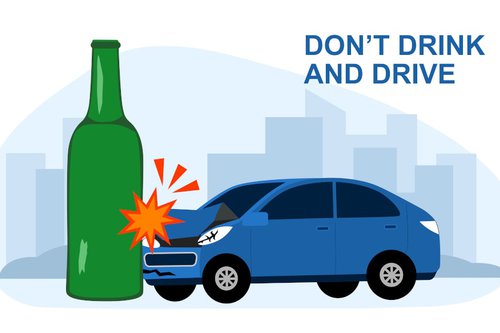How Many Drinks Lead to 0.08 Blood Alcohol Concentration?

In Canada, as in much of the world, police and prosecutors use measurable blood alcohol concentration thresholds to legally prove that a driver was driving while impaired by alcohol. Section 320.14 of the Criminal Code establishes that anyone with a BAC that is equal to or exceeds 80 mg of alcohol in 100 mL of blood within two hours of ceasing to operate a motor vehicle is legally impaired.
Canadian police use roadside screening devices to determine whether a driver has likely exceeded the 0.08 BAC threshold and then confirm those results with more precise breathalyzer measurements that can be introduced in court as evidence. Those refusing or failing to undergo breathalyzer testing are charged with the Code's Section 320.15 offence, failing or refusing a breathalyzer test, which carries the same penalty as a standard DUI upon conviction.
From a legal perspective, the 0.08 BAC threshold is straightforward. However, that threshold is far less clear-cut for any driver who may have consumed alcohol, as they can only guess what their BAC might be. Such guesswork from a driver who may have consumed four drinks in three hours will certainly be imprecise; indeed, many drivers run afoul of the law because of their faulty BAC estimates.
“I've had many DUI clients tell me, 'There's no way I could have blown over 0.08,'" says TorontoDUI founding partner Robbie Tsang . “They go on to explain that they only had a couple of drinks, that it had been hours since their last drink, that they diluted the alcohol by drinking tons of water, or give a similar reason. The bottom line is that rudimentary estimation of BAC levels is generally not very effective."
TorontoDUI founding partner Jeff Mass adds that BAC guesswork is problematic because several variables affect each person's levels, and urban myths lead people to make errant conclusions about their levels. “I've had to tell clients that coffee doesn't lower BAC levels and gorging on a big meal doesn't suck the alcohol out of the bloodstream," he says. “I've also had to tell quite a few that the 'only one drink per hour' rule of thumb doesn't work with double-shot margaritas or similar potent cocktails."
Thus, TorontoDUI's answer to the question of how many drinks it takes to reach the 0.08 BAC threshold for DUI is “it depends." Let's examine BAC, the factors that affect each individual's BAC, and how to best calculate BAC levels. However, understand that trying to estimate BAC levels is essentially guesswork, and faulty estimations can easily tip you over the 0.08 BAC threshold and lead to a possible DUI arrest. The best advice we can give is to not drive after drinking, and, if your failure to heed such advice results in Ontario police arresting you for DUI, we suggest you contact TorontoDUI so that we can start strategizing a robust DUI defence.
What is BAC?
BAC is an acronym standing for blood alcohol concentration or content, a measurement of the amount of blood within a person's bloodstream, expressed as a percentage of how many grams of alcohol are present within 100 millilitres of blood. Thus, a 0.08 BAC level means that there is a 0.08% concentration of alcohol in your bloodstream. While this may seem to be a small amount, alcohol is a powerful substance, and researchers have determined that a 0.08 BAC impairs an average person's coordination, reaction time, motor skills, vision, depth perception, reasoning, and other factors essential for safe driving. In fact, because lower BAC levels can also cause impairment, if Ontario police catch you driving with BAC levels between 0.05 and 0.079, they can charge you with a provincial warning range administrative DUI that carries an immediate three-day license suspension and fine for a first offence.
Factors that Affect a Person's BAC
Much like no two people are alike, individual BAC levels can vary widely even if two people have consumed the exact same amount of alcohol. A person's own BAC levels can also vary between different times of alcohol consumption. Five drinks on one day may lead to a BAC of say 0.10, while on another day, similar consumption might lead to a 0.15 level. Factors that influence BAC include:
- Metabolism — everyone's metabolism differs, and individual metabolic rates vary over time.
- Liver function — while the liver metabolizes alcohol at a relatively consistent rate of 0.015% BAC per hour in most people, liver health affects this rate in some.
- Body weight — heavier individuals tend to have lower BAC levels due to larger blood volumes and body water content, which helps dilute the alcohol (however, drinking lots of water does not raise body water content levels quickly enough to effectively reduce BAC).
- Gender — women tend to reach higher BAC levels with less alcohol than men due to greater body fat percentages and lower levels of alcohol-metabolizing enzymes.
- Alcohol type — alcoholic beverages tend to vary in their alcohol content. Naturally, a craft beer with 8% alcohol by volume (ABV) is going to boost BAC more than a regular Canadian beer with an average 5% ABV.
- Drinking speed — fast consumption quickly raises BAC levels as the body has less time to metabolize the alcohol.
- Food intake — drinking on an empty stomach allows for faster alcohol absorption, which quickly spikes BAC levels, while a full stomach with high protein and fatty foods can delay alcohol absorption and slow BAC increases.
How Much Alcohol is in a Drink and How Many to Reach 0.08 BAC?
According to MADD Canada , a standard alcoholic drink contains 13.5 grams of alcohol. Broken down by type of drink, this equates to:
- 341 ml (12 ounces) of beer with 5% ABV
- 148 ml (5 ounces) of wine with 12.5% ABV
- 44 ml (1.5 ounces) of 40-proof (20% ABV) distilled spirits
In most cases, this is what you receive when you order a beer, glass of wine, or cocktail from a bar. Of course, beer and wine ABV can vary among types and brands, and some distilled spirits come in a higher proof.
Assuming the consumption of “standard" alcoholic drinks by the average person, and not accounting for variable factors other than gender, a 180-pound man will likely breach the 0.08 BAC threshold by drinking five drinks in two hours, six drinks in three hours, or seven drinks in four hours. A 145-pound woman will likely breach the threshold by drinking four drinks in two or three hours or five drinks in four hours.
Lean body weight can significantly alter these rough estimates. For example, a 240-pound man with a healthy body mass index may be able to consume up to seven drinks within two hours before exceeding the 0.08 threshold and may not exceed it with eight drinks over four hours. Inversely, a 100-pound woman will likely exceed the threshold if she drinks three drinks within two, three, or even four hours.
Comparison Table: Estimated Number of Standard Drinks to Reach 0.08 BAC
| Weight | 2 Hours | 3 Hours | 4 Hours | Gender |
|---|---|---|---|---|
| 100 lbs (45 kg) | 2 drinks | 3 drinks | 3 drinks | Female |
| 145 lbs (66 kg) | 4 drinks | 4 drinks | 5 drinks | Female |
| 180 lbs (82 kg) | 5 drinks | 6 drinks | 7 drinks | Male |
| 240 lbs (109 kg) | 7 drinks | 8 drinks | 8+ drinks | Male |
The below tables provide BAC estimates for men and women in relation to time, weight and consumption of standard drinks, and highlight the thresholds that can lead to a criminal DUI and provincial warning range DUI.
Estimated BAC for Males based on weight, number of drinks, and time.
| Weight (lbs) | 1 Drink / 1 hr | 2 Drinks / 2 hr | 3 Drinks / 2 hr | 4 Drinks / 3 hr | 5 Drinks / 4 hr |
|---|---|---|---|---|---|
| 100 | 0.04 | 0.09 | 0.13 | 0.16 | 0.19 |
| 120 | 0.03 | 0.08 | 0.11 | 0.14 | 0.17 |
| 140 | 0.03 | 0.07 | 0.1 | 0.13 | 0.15 |
| 160 | 0.02 | 0.06 | 0.09 | 0.11 | 0.14 |
| 180 | 0.02 | 0.05 | 0.08 | 0.1 | 0.12 |
| 200 | 0.02 | 0.05 | 0.07 | 0.09 | 0.11 |
| 220 | 0.02 | 0.04 | 0.07 | 0.08 | 0.1 |
| 240 | 0.02 | 0.04 | 0.06 | 0.07 | 0.09 |
Estimated BAC for Females following the same structure.
| Weight (lbs) | 1 Drink / 1 hr | 2 Drinks / 2 hr | 3 Drinks / 2 hr | 4 Drinks / 3 hr | 5 Drinks / 4 hr |
|---|---|---|---|---|---|
| 90 | 0.05 | 0.11 | 0.15 | 0.19 | 0.22 |
| 100 | 0.05 | 0.1 | 0.14 | 0.17 | 0.2 |
| 110 | 0.04 | 0.09 | 0.13 | 0.15 | 0.18 |
| 120 | 0.04 | 0.08 | 0.11 | 0.14 | 0.17 |
| 130 | 0.04 | 0.07 | 0.1 | 0.13 | 0.15 |
| 140 | 0.03 | 0.07 | 0.09 | 0.12 | 0.14 |
| 150 | 0.03 | 0.06 | 0.08 | 0.11 | 0.13 |
| 160 | 0.03 | 0.06 | 0.08 | 0.1 | 0.12 |
Don't Take the Chance of Miscalculating Your BAC
As experienced Greater Toronto Area DUI defence lawyers, we advise you that these charts should not be used to guide your drinking behaviour to allow you to drive; instead, you should always plan alternative transportation if you intend to drink. That said, if Ontario police have arrested you for DUI, contact TorontoDUI for a free initial consultation.
